Whether you need to service, repair or replace your existing Clark Mast, it is important that you correctly identify the model you have. There are a couple of ways to do this. We’ll start with the most simple:
Know Your Mast
KNOW YOUR MAST
Identification Label
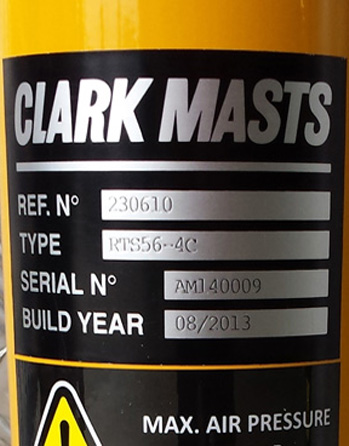
As seen here, the identification label should be present on your mast’s base tube and contain the following information:
1. Ref. No. example: 230610
2. Type example: RTS56-4C
3. Serial No. example: AM150025
4. Build Year example: 2016
Providing this information to us will greatly assist in making sure that you receive the right assistance for your product, whether that be for ordering spare parts, requesting a replacement manual or datasheet, or ordering a new mast. However, this label can be damaged or worn over time, so we can also identify the mast using the following method.
Mast specifications
If you cannot find the identification label, or some information is missing due to wear or damage, we can identify the mast by appearance.
By determining the following four key features of the mast by inspecting it on-site, you can record for us the necessary information we need to identify it.
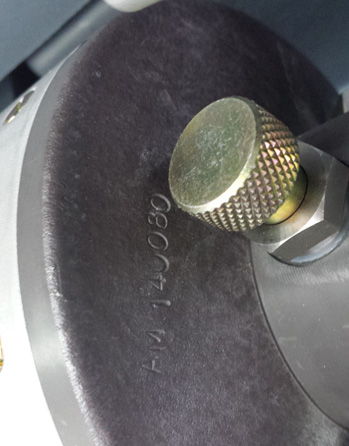
Find the serial number stamp:
The serial number of the mast can be found stamped into or near the aluminium base casting of our masts.
Example formats for the serial number are:
a. Two letters, followed by a string of numbers example: AM140072 or GK25472
b. One letter, followed by a string of numbers example: G10864
c. A string of numbers example: 52403
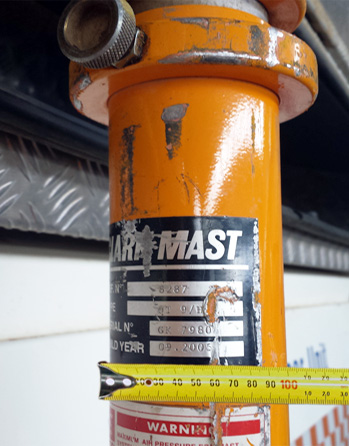
Measure the base tube diameter:
The base tube diameter should be measured in inches, and will appear in increments of half an inch.
A mast may have any half inch base tube diameters from 2.5 inches to 9.0 inches. Some of the most common base tube diameters are:
2.5 inches (63.5mm)
3.0 inches (76.2mm)
4.5 inches (114.3mm)
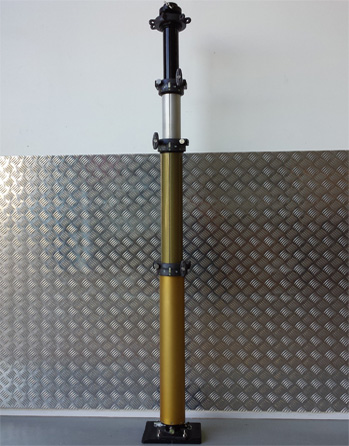
Count the number of tubes in the mast:
To determine how many tube sections the mast has you will need to count how many tubes make up the mast. They include:
a. The base tube, and
b. All the extending sections, including the top tube
The total sum of these is equal to how many sections we deem the mast to have. In the example image left, the mast has four sections.
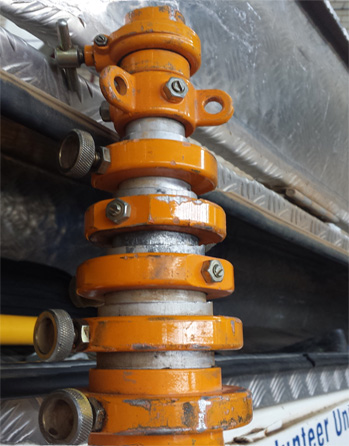
Picture of the head of the mast:
Email or use the below online form to also submit a photo to us of the head of the mast section with all its sections retracted.
This helps us to determine the age of the mast based on the style of fittings and collars present.
While not always necessary, it can be an essential step for identifying some types of masts, especially units older than 10 years from certain model ranges.
Still unsure? Send us an message!
If you need help in identifying your mast, please use the below service form and select product identification. Our friendly team will be able to help you online or over the phone to identify your Clark Masts product.


